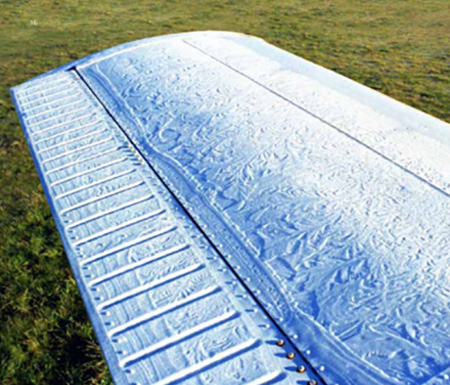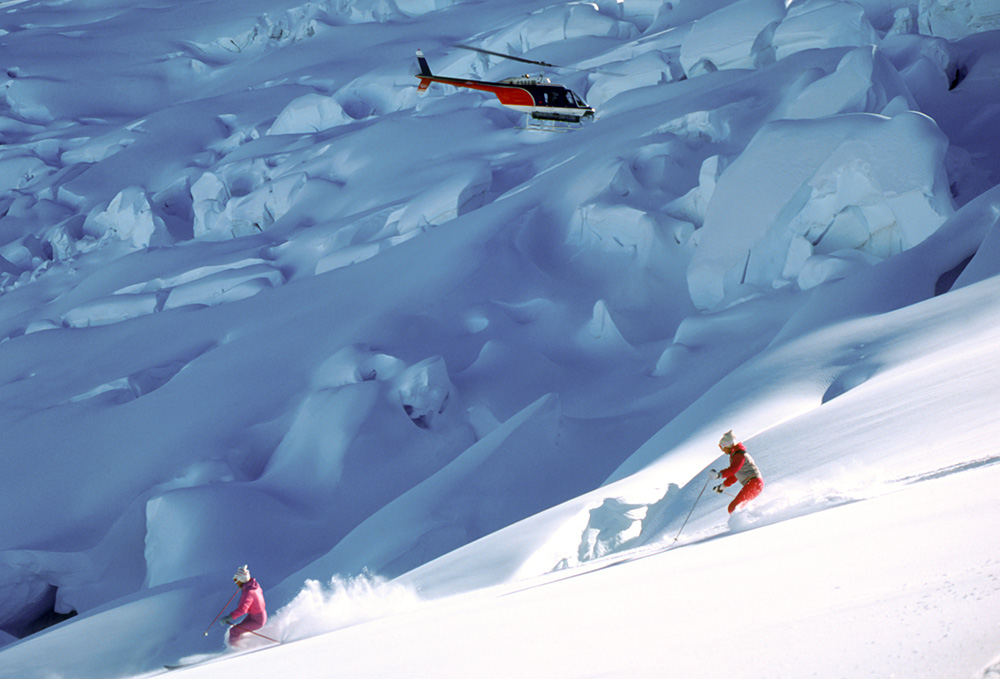The polar jet is beginning its northward migration, bringing weather conditions perfect for producing ice on aircraft – both in the air and on the ground.
“As we move towards winter, southerly outbreaks become more likely,” says CAA Chief Meteorological Officer Paula Acethorp.
“This increases your risk of encountering icing conditions when flying IFR. And in the wake of those outbreaks, as the skies clear and winds ease, frost may form in cooler climes.”
She adds that climate change is expected to increase the chance of pilots encountering icing conditions.
“As the warming trend of the atmosphere brings still more moisture to the air, there’s potential trouble for aviators on cold days.”
So whether you fly fixed wing or rotary, for recreation or for work, knowing how to avoid and deal with icing is essential. Failure to do so can have fatal consequences.
Before you fly…

Photo courtesy of Dan Foley
Rule 91.315 requires VFR pilots to remove all ice, snow, and frost from the aircraft wings, stabilisers, and control surfaces before flying.
In a past Vector article, former CAA aviation examiner, John Parker, notes that even a thin layer of ice can have a huge impact on the aircraft’s performance, and the propeller slipstream or air flow over the wings will not blow the surfaces clean during the flight.
“The effects of icing can be serious and lethal,” John says. “They include increased aircraft weight, drag, and stall speed, loss of lift, thrust, and control, and incorrect instrument readings.”
Carlton Campbell, GA flight examiner and CAA Aviation Safety Advisor (A-cat, 12,000+ hours), says aircraft left in the open during autumn and winter should have their wings and engines covered.
“If snow, ice, or frost does build up on the aircraft, push it into the sun or hangar area where the temperature is above zero. Rub a cloth over it to clear and dry the critical surfaces.” He advises against pouring jugs of hot water over the canopy or windshield, though, because it contributes to wear and tear.
“Don’t use hot water on the aircraft wings in temperatures below zero either,” he warns, “because it will instantly freeze, making de-icing much harder.”
Carlton emphasises that preflight checks play a vital role in managing icing risks.
“Expansion of water as it becomes ice can damage the internal structure of wings, control surfaces, and fuselage bulkheads.
“Torrential overnight rain will get into all sorts of places,” he says, “and if the rain is followed by a hard frost, it can cause the rainwater to freeze around the control linkages of the aircraft. This can result in breakages or control issues.
“If the preflight omits a trim check, it might be only after becoming airborne that the pilot discovers the trim hinges are jammed with ice.”
Carlton also stresses the importance of considering fuel drain testing.
“Fuel drain testing needs special consideration when icing is a risk. The air inside fuel tanks of aircraft left outside on a clear night may condense and freeze. If the ambient air temperature is still below freezing when the fuel drain is tested, the drains may be frozen solid.”
Carlton recommends pushing the aircraft into the sun and waiting for the ice to melt, before testing.
“Keeping fuel tanks full reduces the risk of condensation forming, but it’s vital even full fuel tanks are checked for water by draining some fuel into a tester.”
Paula adds that it’s worth keeping an eye on the forecast meteorological conditions. A minimum temperature of 4 degrees Celsius or less, reasonable humidity, and light winds can increase the risk of frost forming on aircraft parked outside overnight.
Induction system icing
If you have a carburettor, the two factors that most affect icing are the air temperature and the relative humidity.
“When liquid fuel vaporises and mixes with the induction air, it can cause a large drop in temperature. The venturi effect also cools the airflow. If the carburettor temperature then falls below 0 degrees Celsius, the water vapour condenses into ice,” says Carlton.
“The classic symptoms of carburettor icing are a reduction in power and an engine running rougher. The carburettor may freeze up unless you address the problem, usually by applying carburettor heat.
“Carburettor icing is less likely to occur during take-off and climb, when the engine is operating at higher power with a wide throttle opening. Apply full carburettor heat at regular intervals during the cruise to avoid ice accumulating. The engine may still run roughly for a short time as any ice melts and is ingested.”
Icing during flight
Pilots must manage icing risks during flight. If your aircraft isn’t certified for flight in icing conditions, then you must stay grounded.
Paula advises that pilots log on to a certificated meteorological app, such as PreFlight, for the latest weather updates so you know where icing conditions are forecast.
“Be cautious when flying IFR through a front that may contain freezing rain, freezing drizzle, or other hazardous conditions. Even if icing is forecast at 6000ft, and you’re flying at 5000ft, if the icing level descends, you’ll need to take action to avoid the icing conditions.
“Stay aware of how quickly icing conditions can affect your aircraft’s performance. If you encounter icing conditions, don’t dither – get into clear air ASAP.”

Photo: iStock.com/Photolmagesnz
Special considerations for helicopters
Most helicopters in New Zealand have very little ice protection technology, and most aren’t certified for flight in icing conditions.
“The main effect of ice on the rotor system is increased drag, followed by a loss of lift,” says CAA Aviation Safety Advisor Pete Gordon (CPL(H), 10,500 flying hours).
“Helicopter icing may be evident through deteriorating performance, vibration, and visible icing accretion on the aircraft structure.
“The most effective option if you notice icing is to vacate the area, but depending on the rate of accretion, you may need to consider landing immediately.
“Make sure the main rotor and tail rotor blades are free of frost and snow before the flight, and check the aircraft flight manual to understand what conditions may apply to operate your aircraft in icing conditions.
“Heavy rain will seep into areas, similar to fixed-wing aircraft, so make sure all controls have full and free movement.”
“Most helicopters in the limitations section of the flight manual have information on the restrictions of flight into snow or icing conditions, and what levels of temperature and moisture should be avoided,” adds Andy McKay, CAA Flight Examiner and Flight Standards Helicopter and A-cat helicopter instructor.
“The restrictions are generally aimed at ice induction into an engine or ice build-up on any aerodynamic surfaces. Often an engine barrier filter may have a supplement for review as well. A review of these limits is always advised as the weather moves into the colder months of winter, as there can be variations between helicopter types.”
More information
Good Aviation Practice booklet: Winter Flying [PDF 2.2 MB]
Aircraft Icing Handbook(external link)
Image credit: iStock.com/DanelHarwardt
